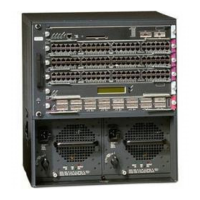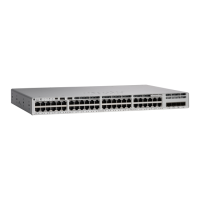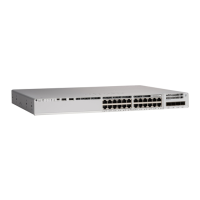3-7
User Guide for the Catalyst Express 500 Switches
OL-8122-01
Chapter 3 Customization
Customize Port Role Attributes
Customize Port Role Attributes
These are the concepts and procedures for refining (customizing) port roles:
• Change VLAN Memberships, page 3-7
• Change the Server Priorities, page 3-8
Change VLAN Memberships
Prerequisite
Before changing VLAN memberships, you should understand what a VLAN is,
its purpose, and how to create a VLAN. You should also understand the use of two
special VLANs supported on the switch: Cisco-Guest and Cisco-Voice. For this
information, see the “What Is a VLAN” section on page 3-12 and the “VLAN
Types” section on page 3-14.
Each switch port is a member of a VLAN. Devices attached to switch ports that
belong to the same VLAN share the same data broadcasts and system resources.
Communication between VLANs requires a Layer 3 device (such as a router or a
Layer 3 switch).
Depending on your network requirements, it might be sufficient to assign all ports
to the default VLAN, which is named default. A small network might only need
one VLAN.
If the switch has only the default VLAN, ports applied with the Guest or
IP Phone+Desktop port role can also belong to the default VLAN. However, if
additional VLANs have been created:
• Ports applied with the Guest port role must belong to the Cisco-Guest VLAN.
• Ports applied with the IP Phone+Desktop port role must belong to the
Cisco-Voice VLAN. These ports must be assigned to the Cisco-Voice VLAN
for voice traffic. At the same time, these ports can also belong to an access
VLAN for regular data traffic.
For more information about these special VLANs, see the “Cisco-Guest and
Cisco-Voice VLANs” section on page 3-16. For information about creating
VLANs, see the “Create, Modify, and Delete VLANs” section on page 3-16.

